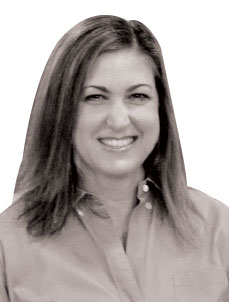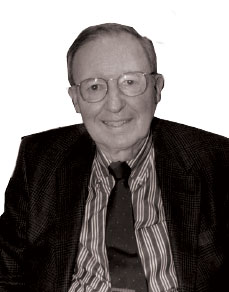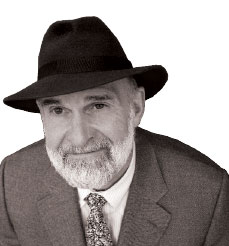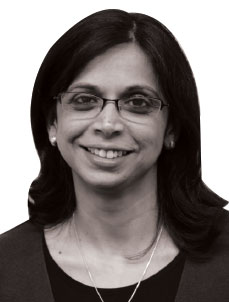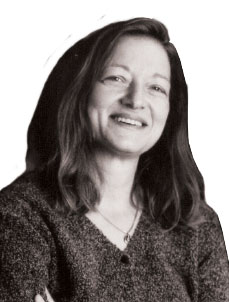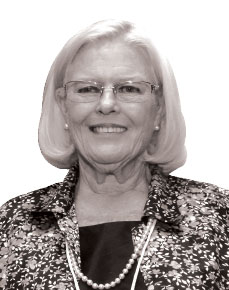Include Me In
That's been the rallying cry of special-needs students throughout a century-plus of efforts to secure quality education. How far can inclusion go?
In 2014, if proposed federal budget cuts take effect, states across the country could well find themselves in a difficult spot. They will not only be required by federal law to provide every disabled student access to the general-education curriculum, but they also will be shouldering the full cost. The burden has been made heavier by the growing trend toward integrating special-needs students, who constitute nearly 12 percent of the overall student population, into general--education classrooms.
At a time when states are already facing budget shortfalls, parents and other advocates for students with disabilities are understandably worried. Still, the fact that states confront such expectations reflects a century of slow, but steady progress in the fight to provide students with disabilities with access to the same quality education as other children.
Those efforts date back to the early 1900s, when Teachers College faculty member Elizabeth E. Farrell established a diagnostic clinic for children who today might have been deemed special education students. Farrell advanced the idea that schools should provide appropriate services for students with special needs. She established the forerunner of the modern Individualized Education Plan (IEP), a personalized support strategy for a learning-disabled student.
Since then, TC and its extended community of educators and researchers have played a leading
role in the evolution of special education.
During the 1960s, as parents of students with developmental disabilities pressed states to de-institutionalize their children and provide school options in home communities, TC psychologist Leonard Blackman secured federal funding to lead a multi-disciplinary effort to explore the capabilities of these students. Blackman's efforts resulted in the construction of Thorndike Hall, which became the hub for this work.
In the late 1970s, after Congress passed two laws requiring schools receiving federal funds to provide equal access to education for disabled children, future TC faculty member Michael Rebell served as lead attorney in the landmark case Jose P. v Mills, a class action suit that in essence compelled New York State to enforce those laws. Meanwhile, two alumnae were playing leading roles in the advocacy movements for students who were blind and children with autism. Both Susan Jay Spungin, a former music student who initially became interested in Braille as a form of musical notation, and Ruth Christ Sullivan, whose son was diagnosed with autism, made substantial contributions to the 1990 Individuals with Disabilities in Education Act (IDEA), which addressed the needs of children with specific disabilities.
More recently, TC has established cutting-edge programs that prepare educators in the fields of autism and deaf/hard of hearing. During the past few years, the College has partnered with the New York City Department of Education to help better prepare general-education teachers to accommodate students with disabilities in their classrooms, and TC faculty have secured federal funds to prepare more teachers with dual certification in general and special education.
In the following roundtable, six TC experts discuss the issues in the movement toward greater inclusivity:
Special education is still a distinct field in this country, and millions of children are still taught in special-education classrooms -- but there is a clear movement toward integrating many of these students into general education. How and why did this movement begin?
LEONARD S. BLACKMAN: In the mid-1950s, most children with severe delays -- today the label is autism, which covers a very broad range of issues, but then it was mental retardation -- were being educated in institutions, with very little attention to the things that were important to real learning. I had a nephew with Down syndrome, and I became very interested in these children and in the kinds of supports they were and weren't getting. How much could they learn and how functional could they become as adults? We weren't the only ones asking these questions, but we set up a program that not only involved educators, but made efforts, not always successful, to include psychologists, neurologists and people from other fields. That multidisciplinary approach, which we believed was essential, was really quite unusual at the time. Meanwhile, the parents of these children, particularly the ones in the really dysfunctional institutions, had begun really pushing for change. They button-holed their congressmen, telling them that they wanted their children to go to regular schools, in their own communities, and with other children. That resulted in a lot of change, including the passage in 1975 of Public Law 94142, the Education of All Handicapped Children Act.
So what do the data tell us about how well students with disabilities have fared in general-education classrooms?
CELIA OYLER: There are 30 years of ample evidence that people do better when they have access to general education classrooms. We have tons of federal research about what happens when they leave, whether you're looking at employment, independent living, social integration, post-secondary attainment or test scores. If you put 12 kids in a room together who don't know how to talk, you're not going to have a lot of kids who are going to learn to talk.
So if the research is so clear, why aren't there more classrooms that are inclusive?
OYLER: Heterogeneous instruction is very difficult. Some people have the impression that school districts are putting disabled kids in general classrooms as a way to save money, when in fact, it costs about twice as much as keeping them in separate classrooms. So the reason people don't teach heterogeneously is not because of the outcome for the learner, but because tracking and segregation is easier and less expensive. Inclusive education asks teachers to actually redesign the cognitive and social tasks in classrooms, so that people can participate together in multi-level projects. It requires project-based cooperation, creativity and problem-solving. Inclusive education
is not a special-ed topic, it's a school reform topic, or more appropriately, a civil rights movement.
But apart from the cost, there seems to be a perception in some quarters that mainstreaming is a negative. Why that bad rap?
R. DOUGLAS GREER: There is a law in the land about including more students with disabilities, but generally, it's not being done right. Simply mandating inclusion without the expertise is not going to do it. It's like the targets for universal proficiency set by No Child Left Behind, or like saying "Let's go to Mars" -- it's a great idea, but nobody has the slightest idea how to get there.
So what does it take to do it well?
SRIKALA NARAIAN: Inclusiveness does not mean asking if this particular child is ready for a general-education classroom. Inclusiveness is shifting attention to the classroom practices and saying, to what extent is this classroom ready to accept students who have different learning profiles? We need to step back a little bit from trying to locate the problem only with the child and ask instead, "How capable is this classroom to receive diverse learners? How are the curricula, the schooling practices, the teacher attitudes and so forth supporting the participation of all students?"
SUSAN JAY SPUNGIN: Inclusion is not mainstreaming with a vengeance. It's something that works only when the system is set up to accommodate children with all kinds of disabilities, and only when we have sufficient numbers of well-trained teachers. So I like to say that "pull out" -- as in pulling children with disabilities out of a class to work with teachers who have specialized expertise -- is not a dirty word, even though some people worry about stigmatizing children by doing that. But "push out," meaning exclusion of children from opportunities to receive the highest-quality teaching, is a dirty word. And right now, aiming to ensure that all teachers will have the same level of skills is a great goal, but I don't believe it's one we're going to achieve soon, not with poverty and all the other problems facing schools. So I am very much a supporter of inclusion, but I believe that it must be done carefully and appropriately, or otherwise we won't help the children whose interests we're trying to serve.
How would you determine what each child needs, and who goes where and what they'll be doing? That sounds nearly impossible to do with each and every child -- learning-disabled or not.
GREER: With our CABAS system, our theories about how to help kids come out of practice. We and others have identified what we call "cusps," or stages that kids progress through on the way to becoming fully verbal. We've created scores of protocols, or interventions that work to institute socially learned, conditioned reinforcers that make social interaction functional and learning in inclusive classrooms possible. Our student teachers are constantly adapting existing protocols or developing new ones to meet the needs of the individual children they work with -- for example, to help children develop the ability to match a two-dimensional stimulus to a printed target, which is an essential step in understanding that the written word corresponds to external realities. Everything we teach in our
CABAS schools is based on these scientific procedures, and we use continuous measurement of the kids' progress day to day, and we relate those measures to measures of the achievement of national norms. We also track the success of our teachers on a continuous basis. That way, we are sure that teachers are applying what we know to how they teach. If the kid doesn't do well, then the problem is one we can trace.
DUDEK: It's individualized and then it's constantly modified to meet the individual learner, moment to moment, week to week, month to month -- whatever needs to be changed, the grouping of kids, the way instruction is presented, changes. There are always two or three groups doing different things in a generalized class. Everybody should not be doing the same thing.
It sounds like differentiated instruction on steroids.
GREER: We're probably the inventors of differentiated instruction.
So how have your kids made out?
GREER: In independent research, we have shown that we get significantly better outcomes, compared to non-scientific procedures and to other programs that use behaviorist methods. But the great thing is that these methods aren't just for kids with language deficits. We used the CABAS teaching method with 17 second-grade children in public schools in Morristown, New Jersey, including special-ed or English as a Second Language students or those receiving free or reduced lunches. We raised their grade equivalence across language, reading and math past fourth grade, with the biggest gains with poor kids. So there's huge potential here to apply our methods in mainstream classrooms.
Other than money and Congress, what are the biggest obstacles to making inclusiveness happen in all schools?
OYLER: The prejudices of people who grew up in a segregated society against people with disabilities. With racial prejudice, there was deep prejudice, deep fear; people's attitudes had to be worked with. And so, because we still have segregation of special-education students in separate classrooms, we haven't eliminated all the fear. Also, all of the cases of inclusion have been achieved with parental pressure, so the parents have been the advocates for the kids, and it becomes a case-by-case advocacy project. So it's very hard to get the systems to change.
GREER: The biggest problem, I believe, is that most people think of teaching as an art -- but when teaching is an art, then great teaching ends up being accidental. We think of teaching as a science, and the challenge, in our view, is to educate people about how that science really works.
What's your ultimate goal?
DUDEK: We want whatever our kids learn to be functional for them.
GREER: If there's a math job out there for someone, we want to give him the skills to do it.
BLACKMAN: My desire is the full intellectual development of these children, irrespective of the label they're given.
NARAIAN: I want to see the creation of classrooms that are universally designed and ready to receive a heterogeneous body of all types of learners.
SPUNGIN: The highest goal we can have is that of educating each other. That means sharing best practices, but above all, it means that we have to learn from children with disabilities about what they need and how best to provide it to them.
Published Thursday, Jun. 27, 2013
